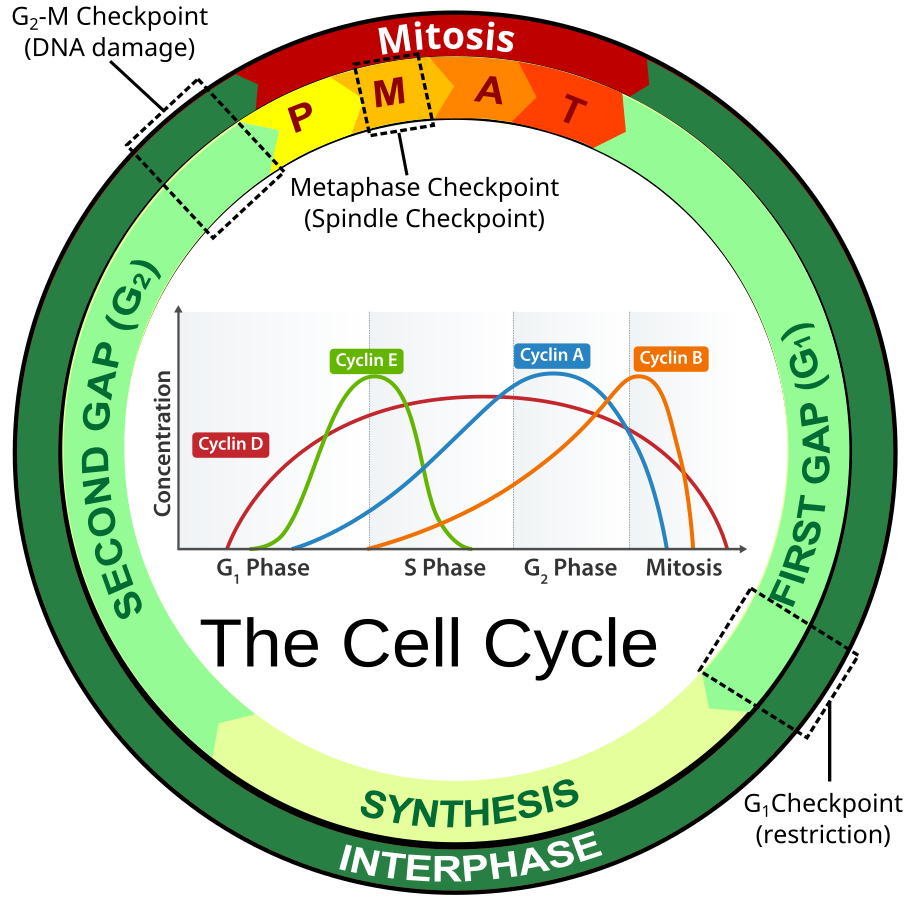Mitosis is one short component of the cell cycle.

The cell cycle refers to the a series of events that describe the metabolic processes of growth and replication of cells.
The bulk of the cell cycle is spent in the “living phase”, known as interphase. Interphase is further broken down in to 3 distinct phases: G1 (Gap 1), S (Synthesis) and G2 (Gap 2).
G1 is the phase of growth when the cell is accumulating resources to live and grow. After attaining a certain size and having amassed enough raw materials, a checkpoint is reached where the cell uses biochemical markers to decide if the next phase should be entered. If the cell is in an environment with enough nutrients in the environment, enough space and having reached the appropriate size, the cell will enter the S phase.
S phase is when metabolism is shifted towards the replication (or synthesis) of the genetic material. During S phase, the amount of DNA in the nucleus is doubled and copied exactly in preparation to divide.
The chromosomes at the end of G1 consist of a single chromatid. At the end of S phase, each chromosome consists of two identical sister chromatids joined at the centromere. When the DNA synthesis is complete, the cell continues on to the second growth phase called G2. Another checkpoint takes place at the end of G2 to ensure the fidelity of the replicated DNA and to re-establish the success of the cell’s capacity to divide in the environment. If conditions are favorable, the cell continues on to mitosis.
Green marker proteins are expressed during the G1 phase. Red marker proteins are expressed during S/G2/M. During the G1 to S transition, fluorescence disappears as the marker proteins also transition in expression.




